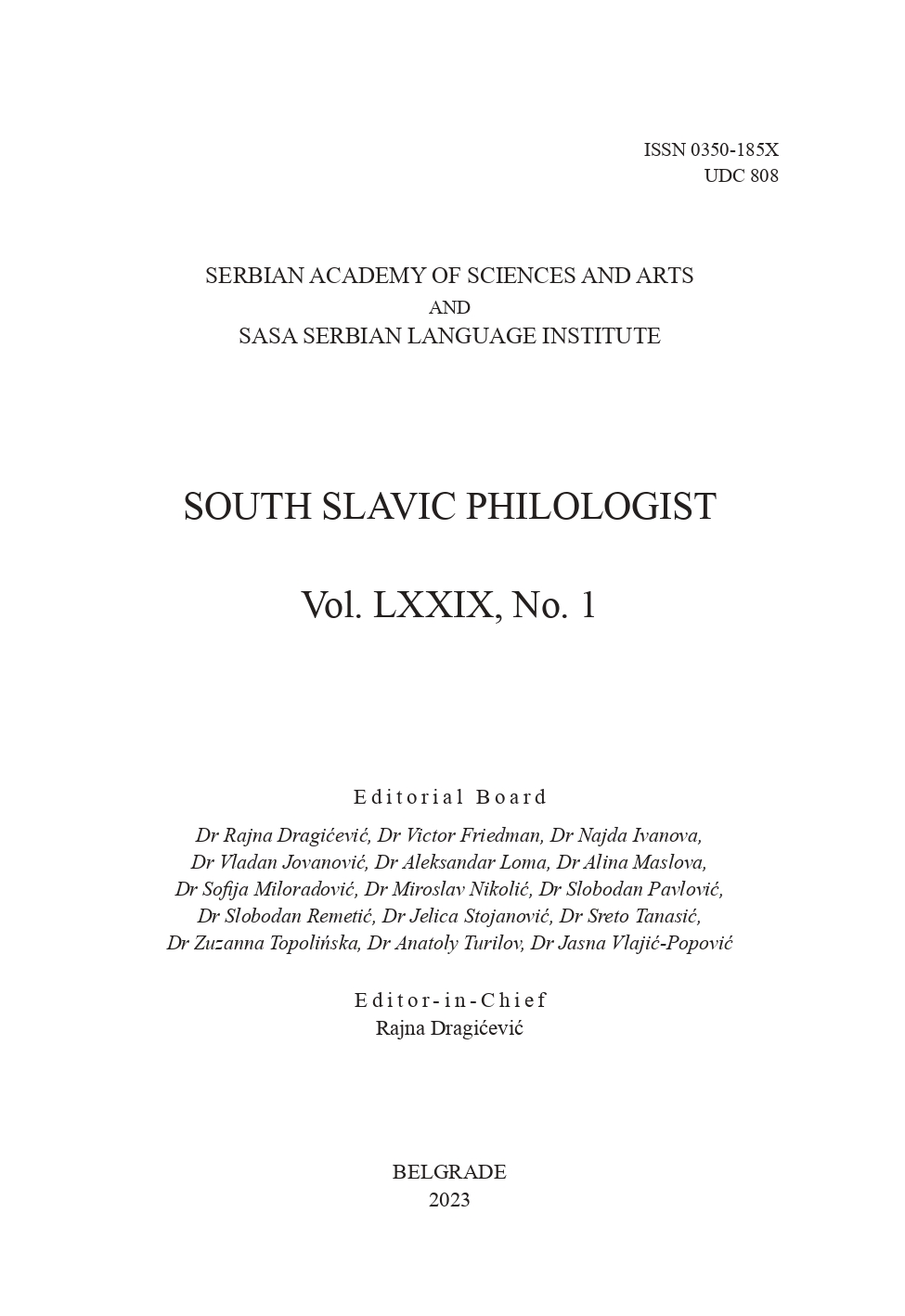PRIMER OBRAZILNE KONKURENČNOSTI FEMINATIVOV NA -ICA IN -KA PRI MOŠKOSPOLSKIH TVORJENKAH NA -OR IN -ATOR
AN EXAMPLE OF THE VARIANT SUFFIXES -ICA AND -KA IN FEMINATIVES DERIVED FROM MASCULINE WORDS ENDING IN -OR AND -ATOR
Author(s): Irena Stramljič Breznik, Tjaša MarkežičSubject(s): Morphology, South Slavic Languages
Published by: Институт за српски језик Српске академије наука и уметности
Keywords: Slovene language; word formation; feminatives; variant suffixal forms
Summary/Abstract: The article examines feminatives as a semantic and word-formation category. In Slavic languages feminatives are mainly regarded as modificational derivatives formed from masculine derivatives by the whole replacement of the masculine suffix (bor-(-ec/-kа), partial replacement of the masculine suffix (bra-l/(-ec/-ka), or by adding the feminine suffix to the masculine suffix (miz-ar/-ka). Due to the expansion of global communication through mass media, the inevitable broadening of vocabulary requires the adaptation of borrowed words to the morphemic, morphological and word-formation paradigms of the borrowing language. As a consequence, it comes as no surprise that feminatives formed from the same masculine base often have two or more variants of feminine suffixes (dekan-ica – dekan-ka – dekan-ja). Three examples of variant feminine suffixes -ica and -ka added to masculine nouns ending in suffixes -or and -ator, which are of foreign origin, are examined in this paper. The purpose of the study is to establish which of the feminine suffixes are more productive and how they conform to the established patterns. The examined cases of masculine formations using the borrowed suffixes -or and its variant -ator (in addition to -tor, -itor and -utor) in the semantic category of living beings show variability in languages such as Slovene, Serbian and Slovakian, which are dependent on the existence of an appropriate nominal or verbal base in the language. In Slovene, such formations are consistently deverbal, while in Serbian and Slovakian they are either denominal or deverbal. The study focuses on three masculine formations koordinator, selektor and senator, and examines how their suffixes combine with the feminine suffix variants (-ka and -ica). The established pattern in Slovene predicts that masculine formations in -ator will form feminatives by adding the suffix -ka, while masculine formations in -or will form feminatives by adding the suffi x -ica. In the example of the words koordinator-ka (from koordin-ator) and selektor-ica (from selekt-or), the usage confirms this pattern. However, there is a deviation from this pattern in the example of senatorka (from senat-or), where the feminative senator-ica would be predicted. The study offers a possible answer to the question of such deviations from the predictable patterns in contrast to the actual use of feminative suffixes. It is clear that language users are guided by different analogies when they form words. Although these analogies may not be linguistically supported, they are important in motivating the formation of many new words, especially those from borrowed bases. The language user depends on the recognition of the formal structure of the word to be able to choose a predictable word-formation pattern. In borrowed words, such formal structure is less clear, since it is based on foreign word-formation patterns with foreign root and derivational morphemes.
Journal: Јужнословенски филолог
- Issue Year: 79/2023
- Issue No: 1
- Page Range: 29-45
- Page Count: 17
- Language: Slovenian

